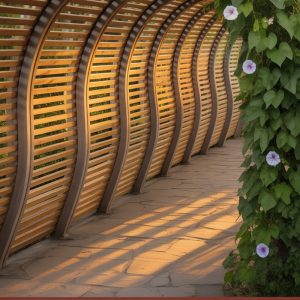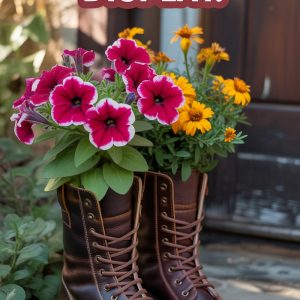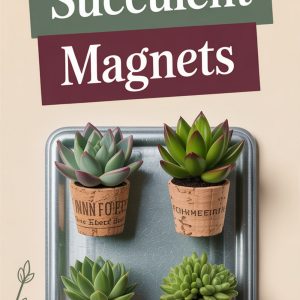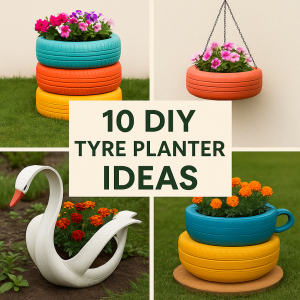With the right simple wins, a small patch, a balcony nook, or a sunny window can all become a garden. There are 15 easy DIY projects below that you can do in both rented and owned homes. They range from quick container projects to simple builds. They are easy to use, don’t cost a lot of money, and can be made bigger over time. You’ll see vertical pallet planters, no-dig beds, a strong arch trellis, and smart lighting that makes evenings last longer outside. I point you to popular gardening methods that people love, so you don’t have to guess what to try first. You can choose one project for the weekend or a bunch of them to do all at once to make your backyard look better. Either way, you’ll get new herbs, bright flowers, and a peaceful green space to relax in. There is a reason why vertical pallet gardens, no-dig “lasagna” beds, and cattle-panel arches are so popular.
1. Portable Herb Bar on a Rolling Cart
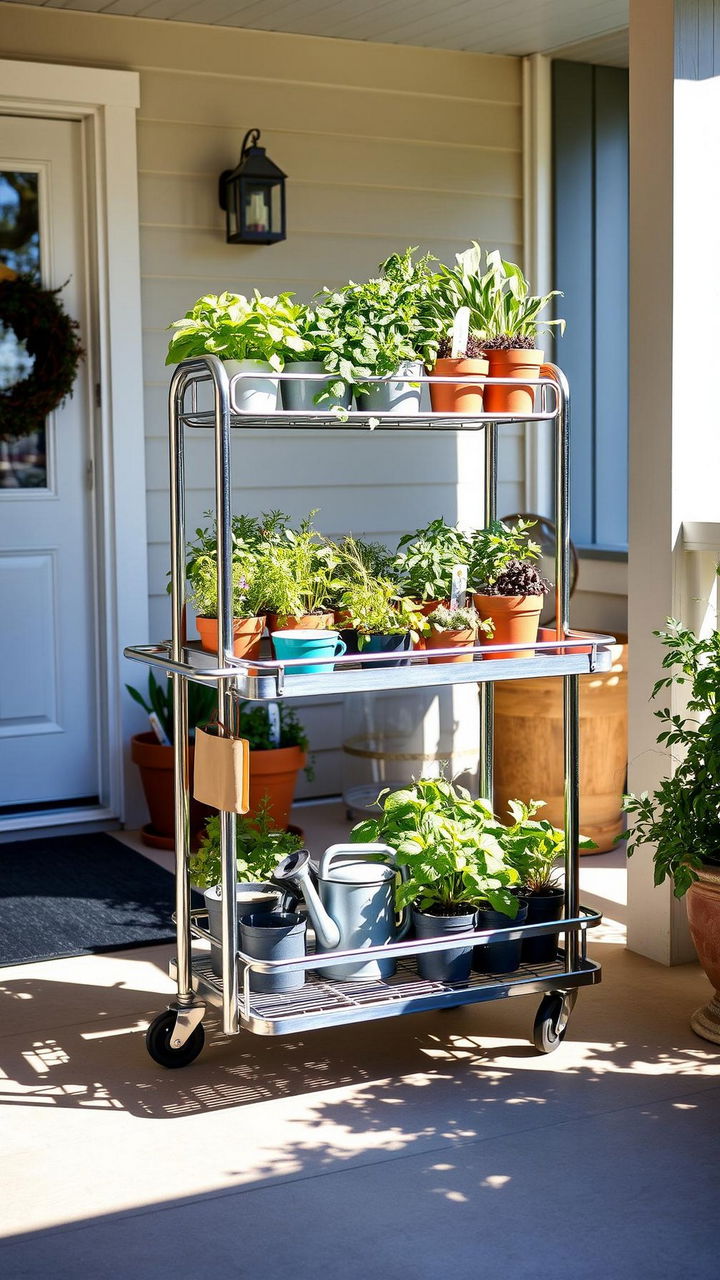
You can turn a simple utility cart into a mobile herb bar that you can follow the sun with. Put shallow trays on the shelves to catch water, and then put herbs in groups based on how much water they need: basil and parsley on top for regular watering, and woody thyme and rosemary on the bottom. If your cart doesn’t already have them, add casters with brakes to the bottom of the cart. Use plastic or fabric pots that are light to keep the weight down. Put a small watering can, some snips, and some plant markers on the bottom shelf so you can take care of them. Roll it to the kitchen door to quickly pick up the food, then park it back in the sun. It’s small, neat, and great for people who rent.
2. Vertical Pallet Garden for Leafy Greens

One reclaimed pallet can turn into a wall of lettuce, herbs, and strawberries that takes up very little space. Sand down the rough spots, then use staples to attach doubled landscape fabric to the back, sides, and bottom to hold the soil. Put the pallet on the ground, fill it with potting mix, water it to settle, and then put the seedlings between the slats. After a week of rooting, put it upright and use heavy screws to attach it to a wall or fence. Pour water on it from the top until it comes out the bottom. It doesn’t cost much, takes only a few hours to build, and holds a lot of plants in a small space. Extension guides make the steps very clear.
3. Simple Raised Bed with Two Boards
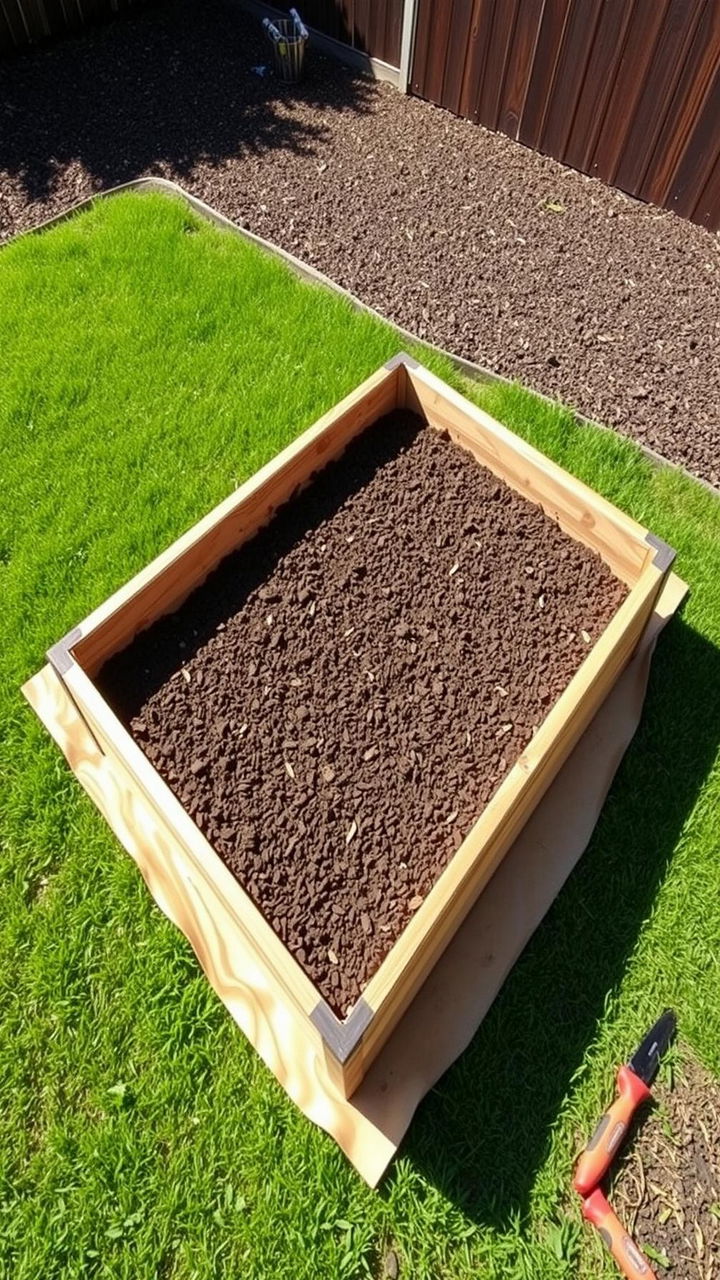
You can make a 4×8 raised bed by cutting two eight-foot 2×10 boards in half and using four corner blocks and screws from the outside. Choose a sunny, mostly flat area. Put overlapping cardboard over the grass, then put the frame on top and make sure it’s square before driving the screws. Fill with a mix of topsoil and compost that is half and half, then rake it level. The depth lets roots spread out while keeping costs low. Mark out simple rows or squares to keep the spacing the same. Put down two inches of mulch at the end to keep the moisture in and cut down on weeds. This strong, low-profile bed looks nice, can grow almost anything, and can be easily expanded with a matching twin.
4. No-Dig “Lasagna” Garden Bed
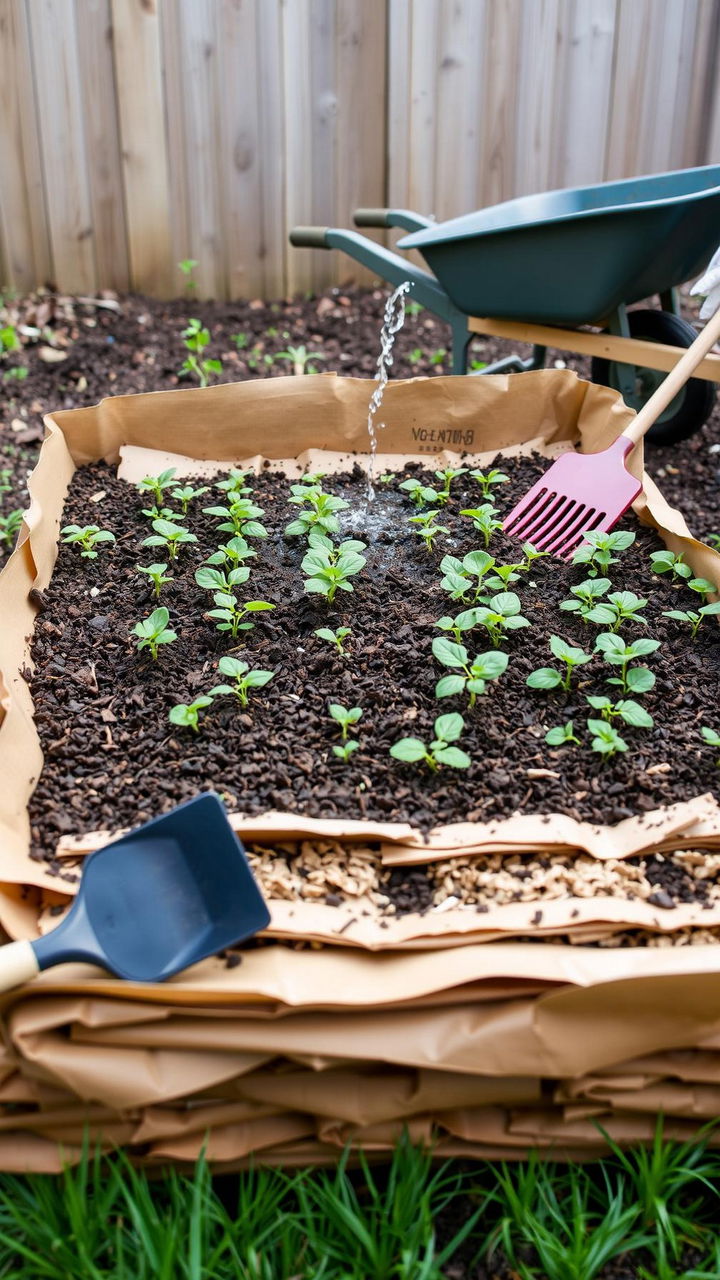
Don’t dig at all; instead, feed the soil from above. To kill weeds, start with a base layer of cardboard that overlaps. Use carbon-rich browns like dry leaves, shredded paper, and straw, and nitrogen-rich greens like grass clippings, kitchen scraps, and fresh prunings. Add a thin layer of mulch and compost on top. To help each layer settle, water it. You can plant seedlings right away or wait a few weeks for the bed to settle. This method makes the soil better, keeps moisture steady, and turns yard waste into fertiliser with very little work. Beginners like it because they get results quickly and don’t have to do any hard work or tilling. How-to guides that are easy to read cover the basics.
5. Hanging Basket Trio for Porch Color
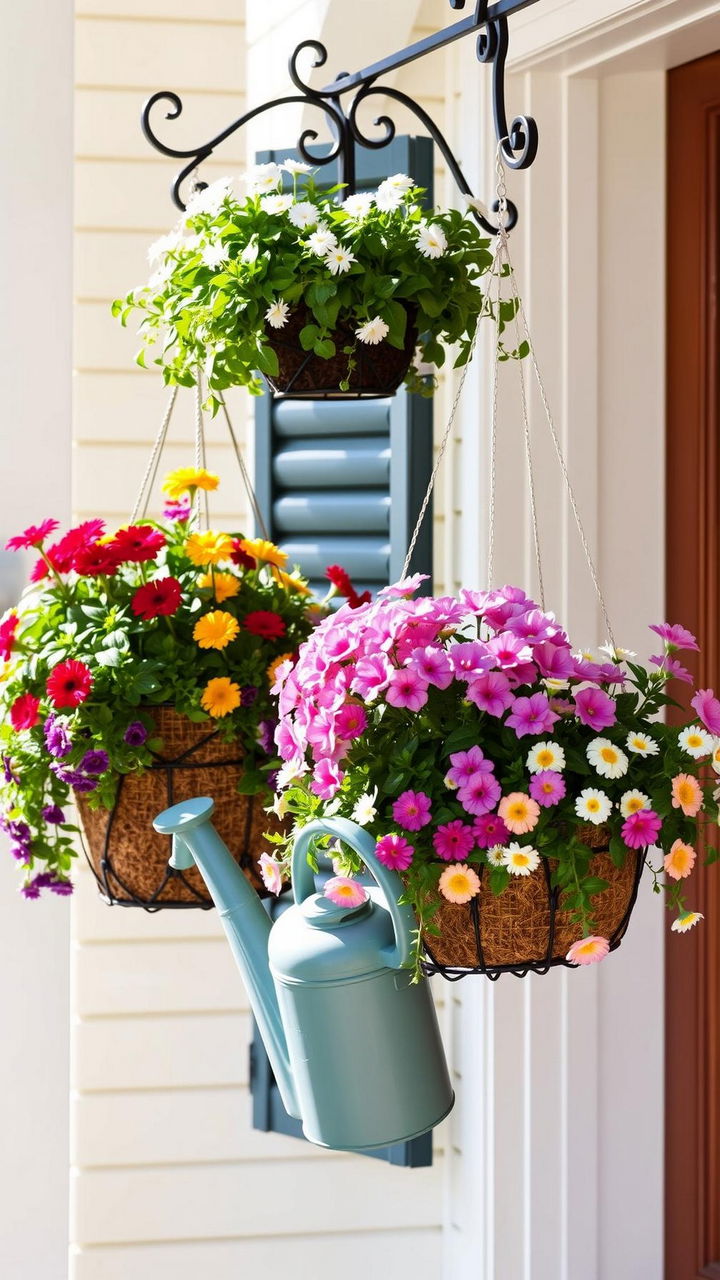
Three staggered hanging baskets will instantly add vertical interest. Use strong ceiling hooks or a wall bracket that is screwed into the studs. Fill baskets with lightweight potting mix after lining them with coco fibre or a reusable liner. To make a balanced arrangement, use a spiller (like trailing lobelia or ivy), a filler (like calibrachoa or lettuce), and a thriller (like a compact geranium or dwarf tomato). Water until it runs out, then feed it lightly every other week. If you forget, you can use a simple drip ring or self-watering spike. This stacked display adds colour, movement, and scent while keeping the floor clear and making it easy to clean.
6. Cattle-Panel Arch Trellis for Vines
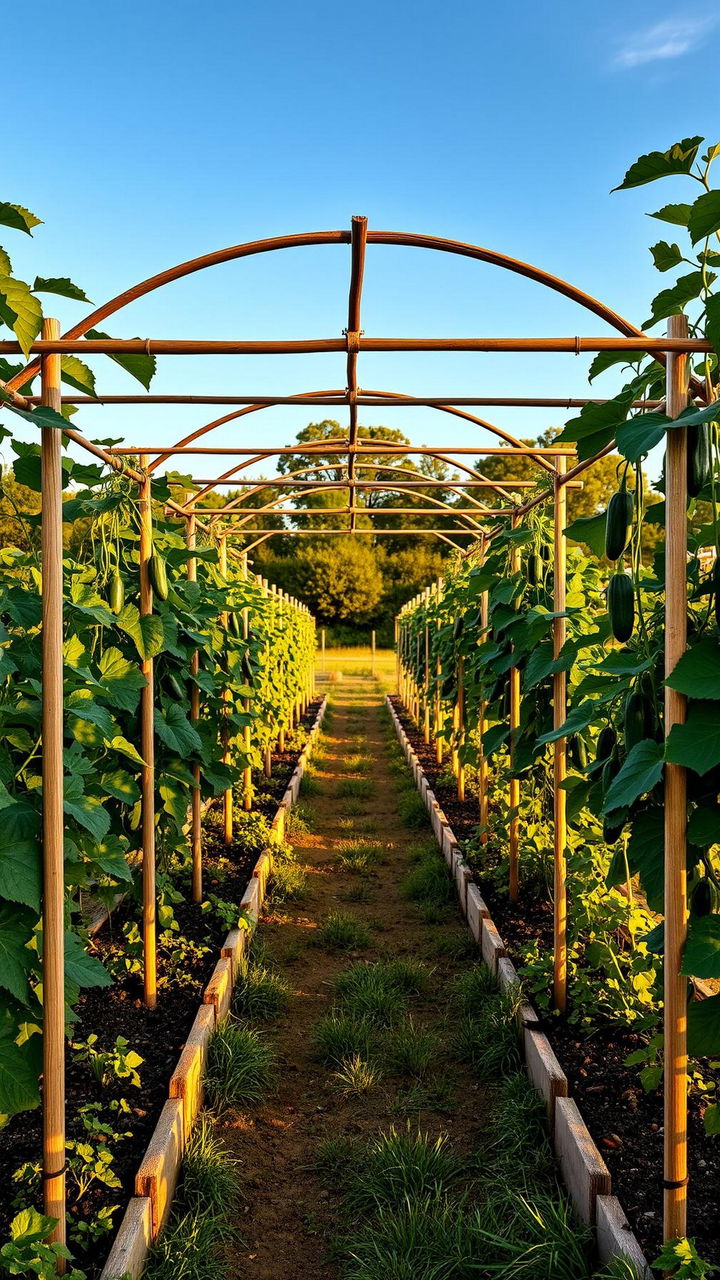
Make a pretty tunnel for cucumbers, beans, or gourds by bending a 16-foot cattle panel between two beds. Put T-posts on each side, lean the panel to make an arch, and tie it down with heavy zip ties or wire. The mesh gives tendrils a lot to hold on to, and the fruits hang cleaner. You also get a shaded path underneath. It’s surprisingly strong, cheap, and looks great in pictures when it’s time to harvest. Plant one vining crop on each side and help the stems grow early. Garden teachers and experienced growers swear by this build for its strength and ease. Materials lists and instructions are widely available.
7. Window Box Salad Bar
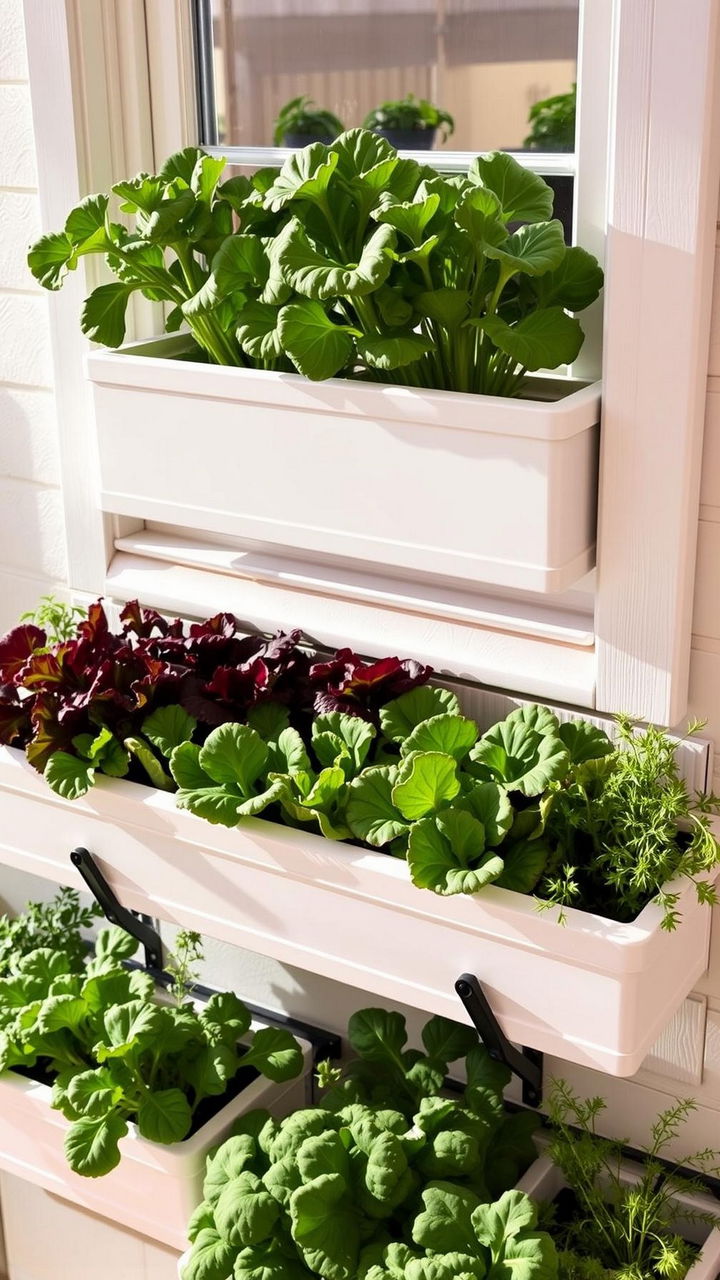
Put two deep window boxes on a sunny sill and make sure to hit studs or use the right masonry anchors. If you need to, drill more drainage holes, add saucers or drip trays, and fill the pot with potting mix that holds moisture. Plant cut-and-come-again lettuces, spinach and rocket in close rows so you can cut them often. Add chives and parsley to the corners for flavour all year long. In warm weather, keep a small spray bottle close by so you can water your plants quickly every day. You can see when your plants need water and when they have pests because it’s at eye level. Plus, salads are right there in the kitchen.
8. Stacked Strawberry Tower
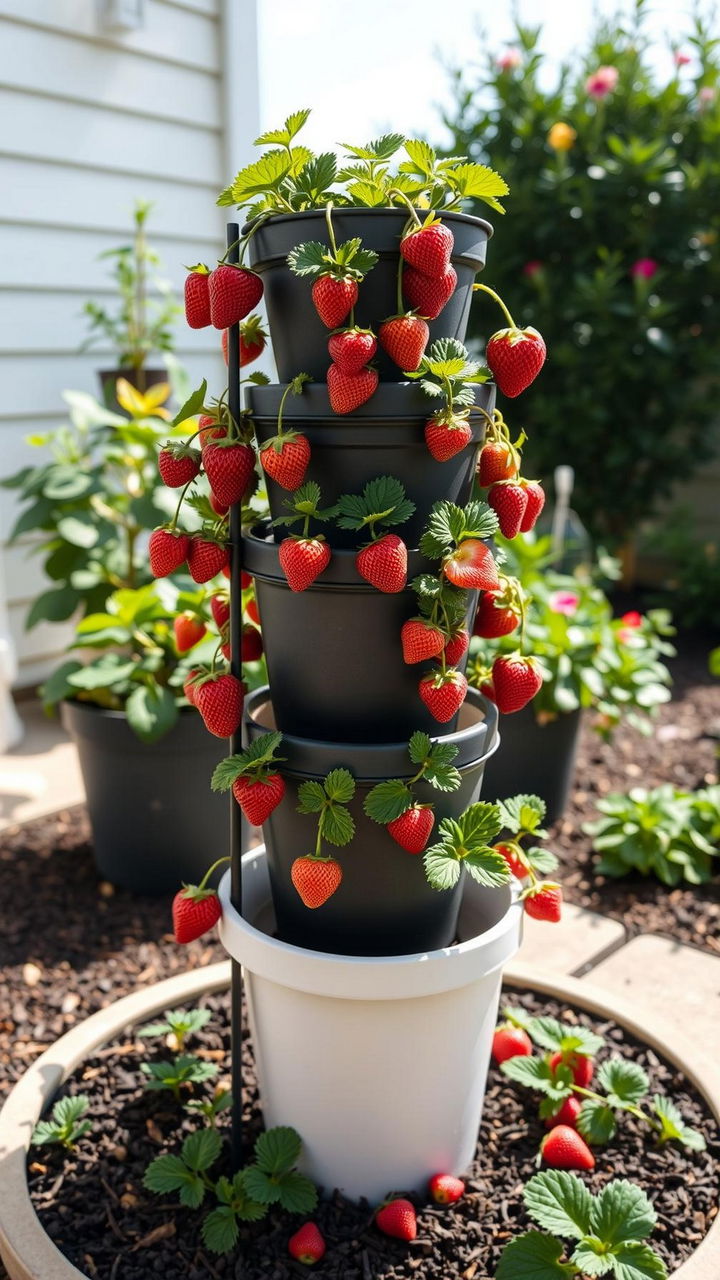
To make a small strawberry tower, stack three to five pots of different sizes on top of each other. To keep the pots from tipping over, run a piece of rebar or a centre dowel through the drainage holes. Then, as you fill each pot with mix, move the stack so that pockets of soil show. Put strawberry starts around the edges and one on top. Water slowly from the top so that the moisture can flow through the column. Add a thin layer of mulch on top to keep moisture in when it’s hot. The tower is pretty, gets the most sun, and keeps berries cleaner and easier to pick. It’s perfect for small yards or patios.
9. Fence-Mounted Gutter Garden
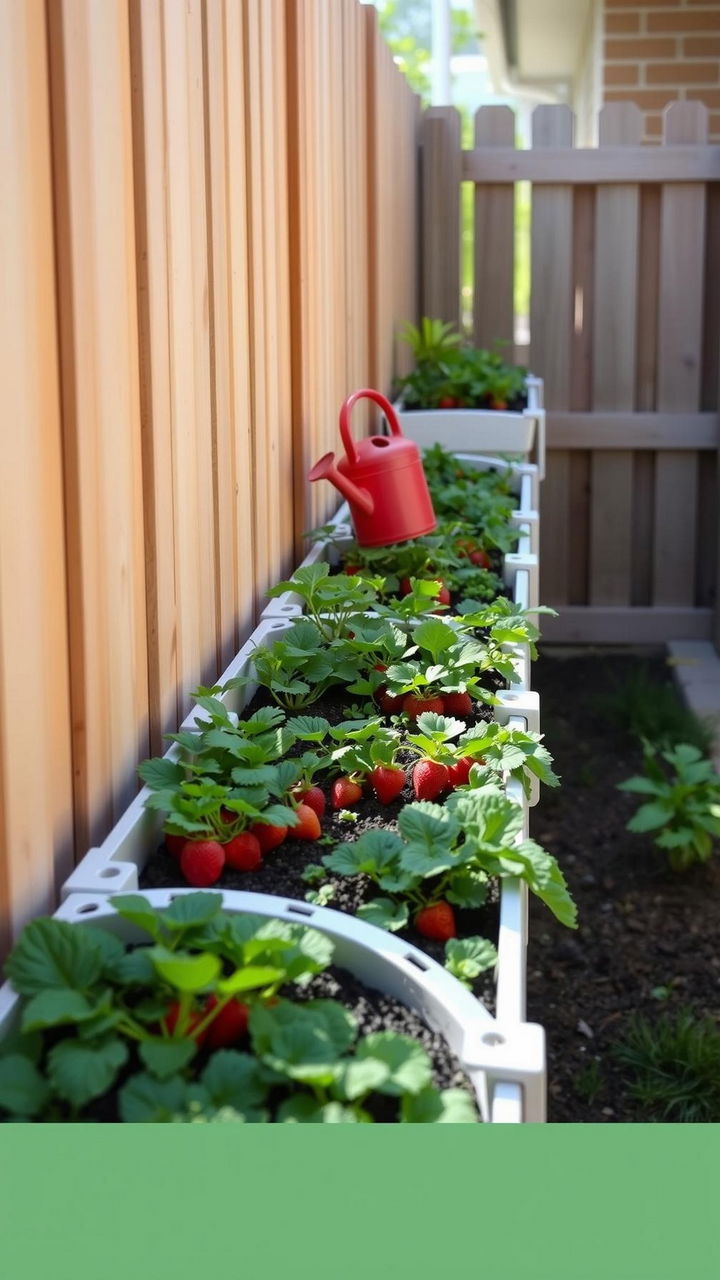
Use extra vinyl gutters to make narrow planters along a fence. Put caps on the ends, drill holes for drainage every six inches, and mount runs with strong brackets at shoulder height. Fill with a light mix and plant crops with shallow roots, like spinach, baby beets for greens, alpine strawberries, or cascading herbs. Water the surface and mulch it with fine bark or coco chips to keep the gutters from drying out too quickly. To make a living fence, stagger several rows so that there is room to water and pick. It looks great, doesn’t cost much, and is great for small side yards where full beds won’t fit.
10. Pallet-Panel Compost Corner
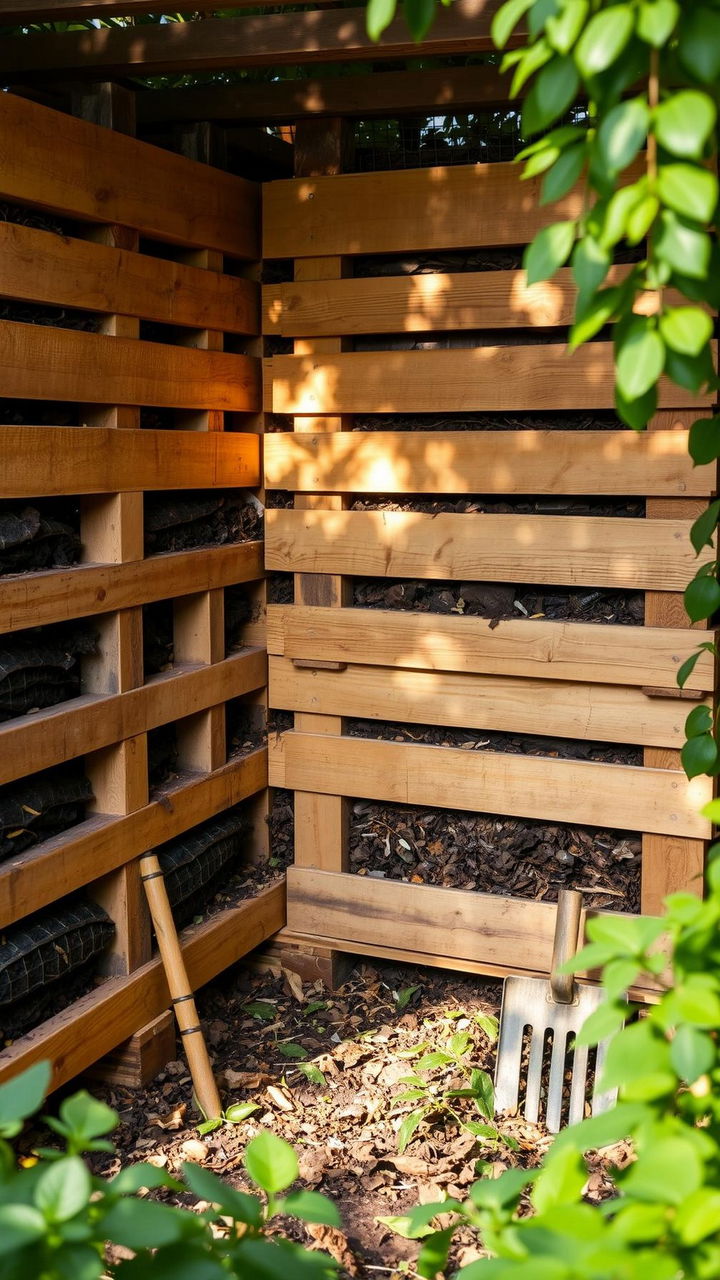
You can make a quick, breathable compost bay by standing three pallets on their sides in a U-shape and tying them together with wire or screws. To get air to flow through your pile, start with thick sticks. Then, mix in kitchen scraps and dry browns. When you think of it, keep it damp like a sponge that has been wrung out and turn it with a garden fork. In a few months, you’ll have dark, crumbly compost that you can use to fill beds and containers. If you outgrow the first pallet bay, add a second one. It fits snugly behind a shed and keeps green waste out of the trash can while feeding your garden for free.
11. Plug-and-Play Soaker Hose Bed
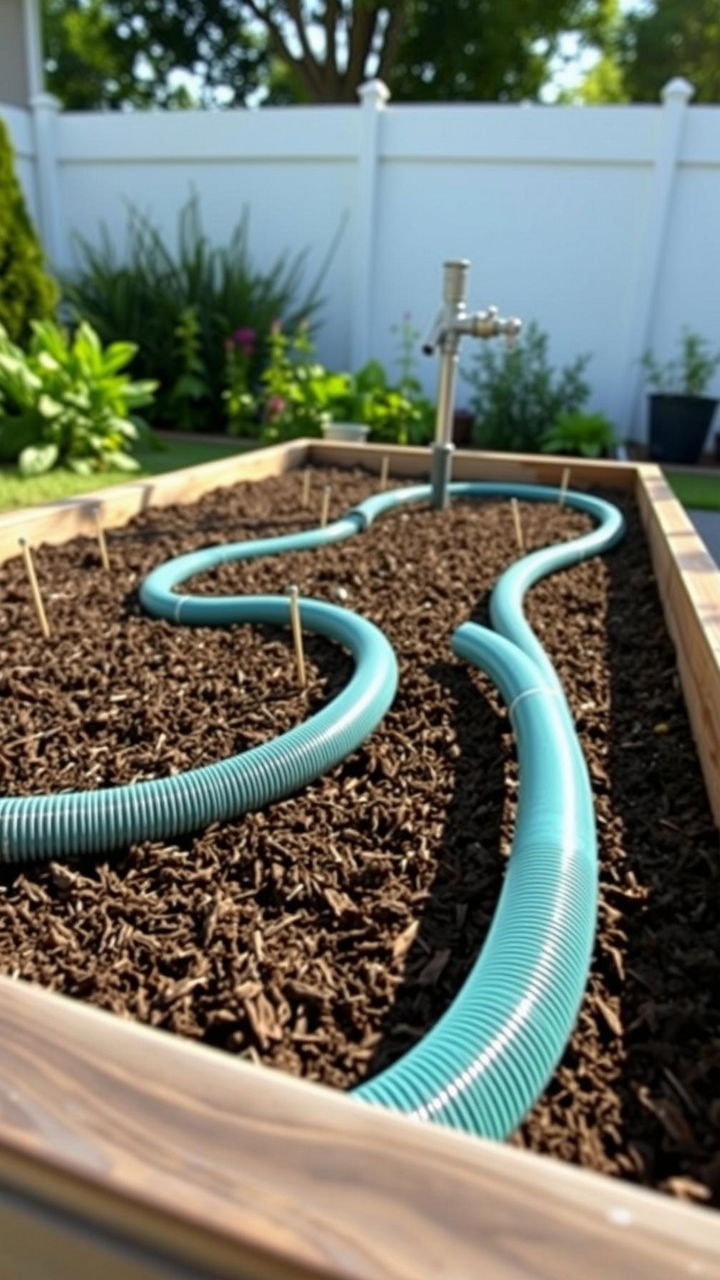
Place a soaker hose in soft S-shapes across a raised bed, leaving eight to twelve inches between each line. To keep it flat, use landscape pins, and then cover it with mulch to keep moisture in. Put a simple timer on the spigot so that the plants get watered early in the morning without you. Run short cycles and make changes until the soil is evenly moist to a depth of one knuckle. This setup saves water, keeps leaves dry (which means less disease), and gives you back your evenings. When the seasons change, coil the hose up for winter and check it for leaks before using it again next year.
12. Pocket-Sized Pollinator Strip
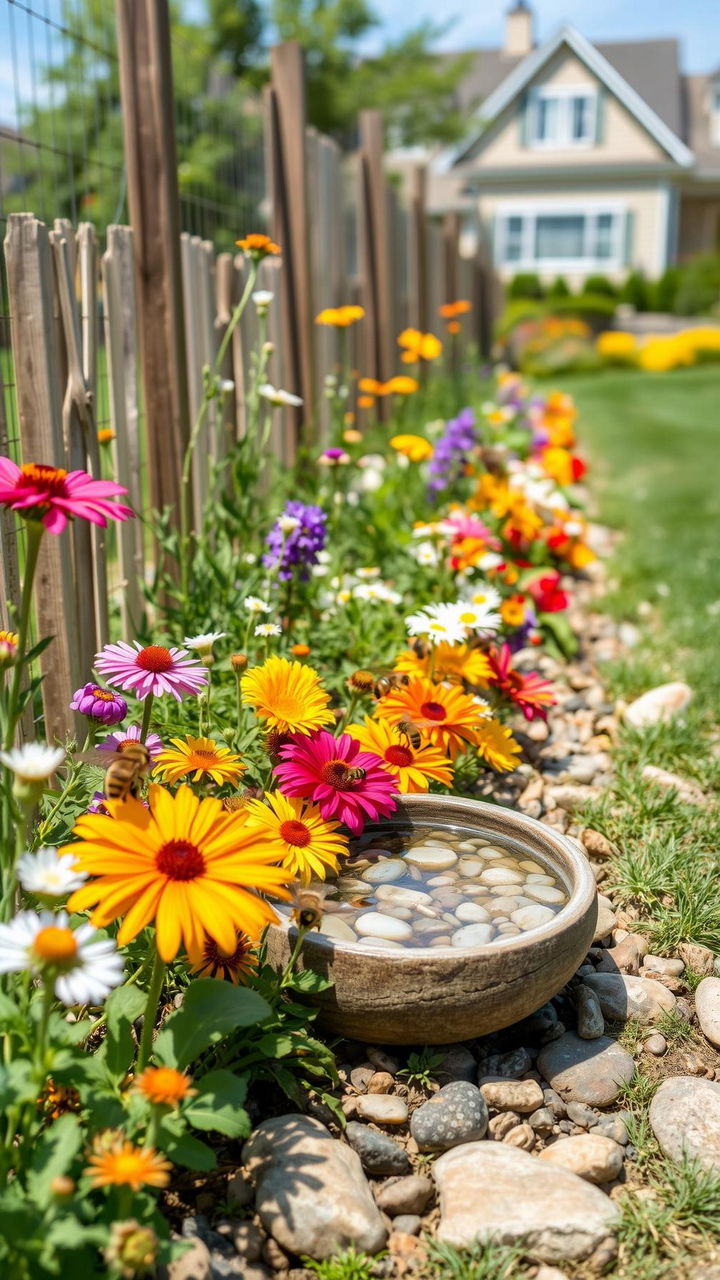
Put a one-foot-wide strip of flowers full of nectar along the edge of your driveway, mailbox, or fence. Plant a mix of native perennials and a few long-flowering annuals so that there is always something in bloom. Think of coneflowers, yarrow, salvias, calendula, and small sunflowers. Put a few herb starts, like thyme and oregano, around your kitchen and feed the bees. For butterflies, add a shallow “pebble puddler” dish and a rock or two for them to sit on. Instead of using pesticides, use spot-hand pest control. In a few weeks, you’ll see bees and hoverflies working, and your vegetables will thank you by getting more pollination and bigger yields.
13. Balcony Microgreens Station
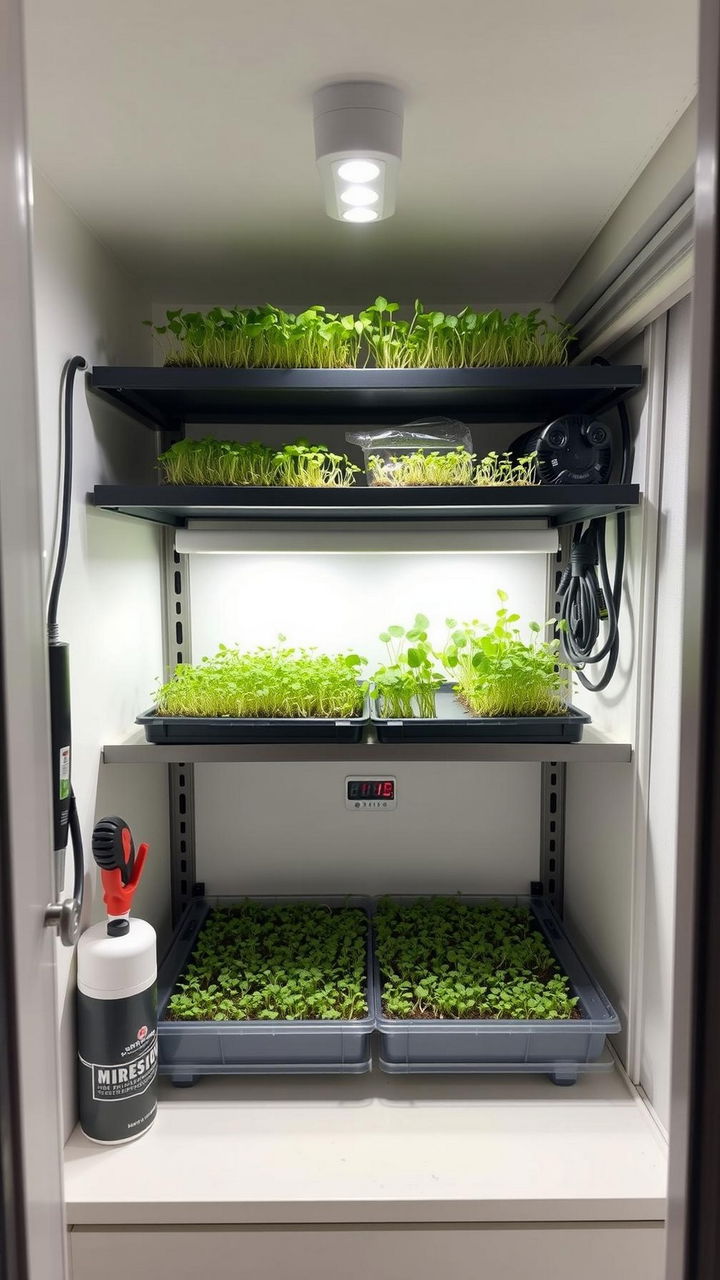
Put a narrow shelving unit next to your brightest window or balcony door and use two of the shelves for microgreens. Use shallow trays with drainage, coconut coir or paper-pulp mats, and plant seeds like peas, radish, broccoli, and sunflower very close together. Mist to get the seeds to sprout, then water from the bottom once the roots have grown. Cut the tops off with scissors after 7 to 14 days to get crunchy, healthy toppings. Change the trays every week so you always have a new one coming up. If there isn’t enough light, hang a basic LED shop light a foot above the trays. For small spaces, it’s clean, quick, and always satisfying.
14. DIY Stepping-Stone Path with Groundcovers
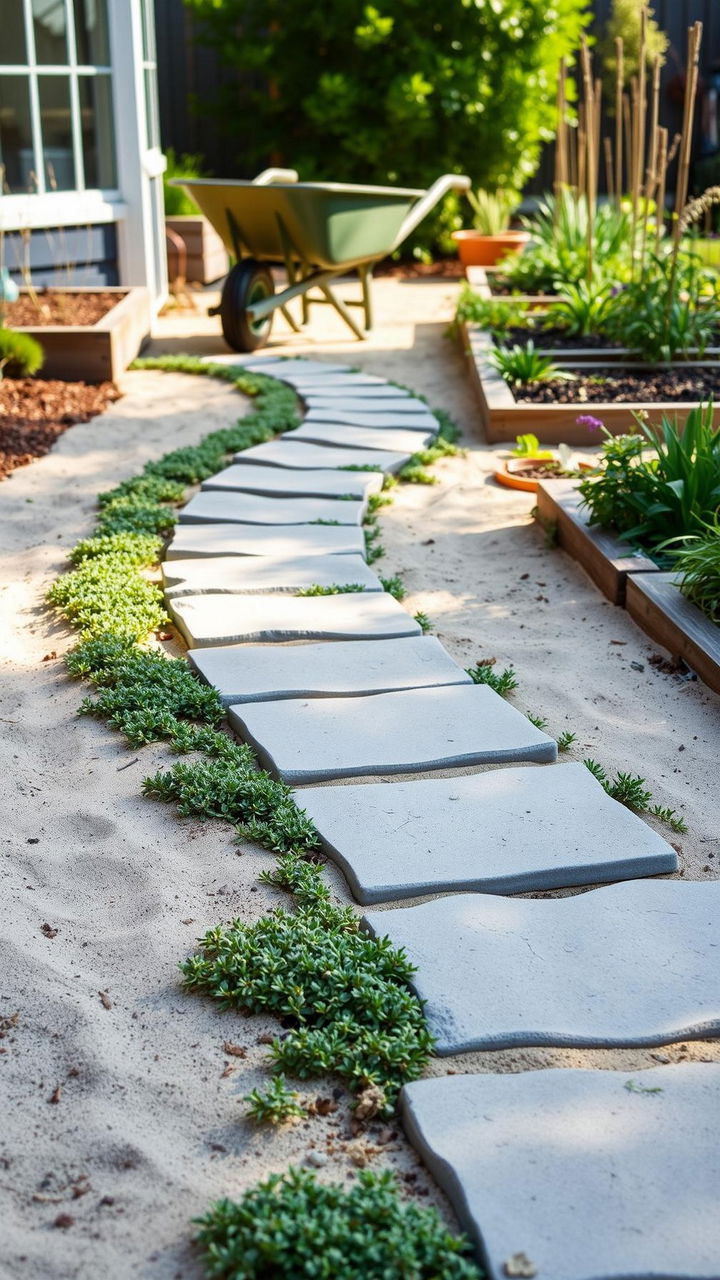
Plan a simple path that keeps feet off wet ground and connects important places like the spigot, compost, and beds. Remove the sod from the area where the stones will go, add an inch of sand, and make sure the pavers are level with the ground around them. Move them around until they are stable, then fill in the gaps with sand. For softness and bees, tuck creeping thyme or Irish moss around the edges. A neat path makes it easier to water, harvest, and clean up, and it also adds structure. For a unified look in your garden, keep curves soft, leave space for the wheelbarrow, and make the path width the same everywhere else.
15. Solar Glow-Up and Upcycled Accents
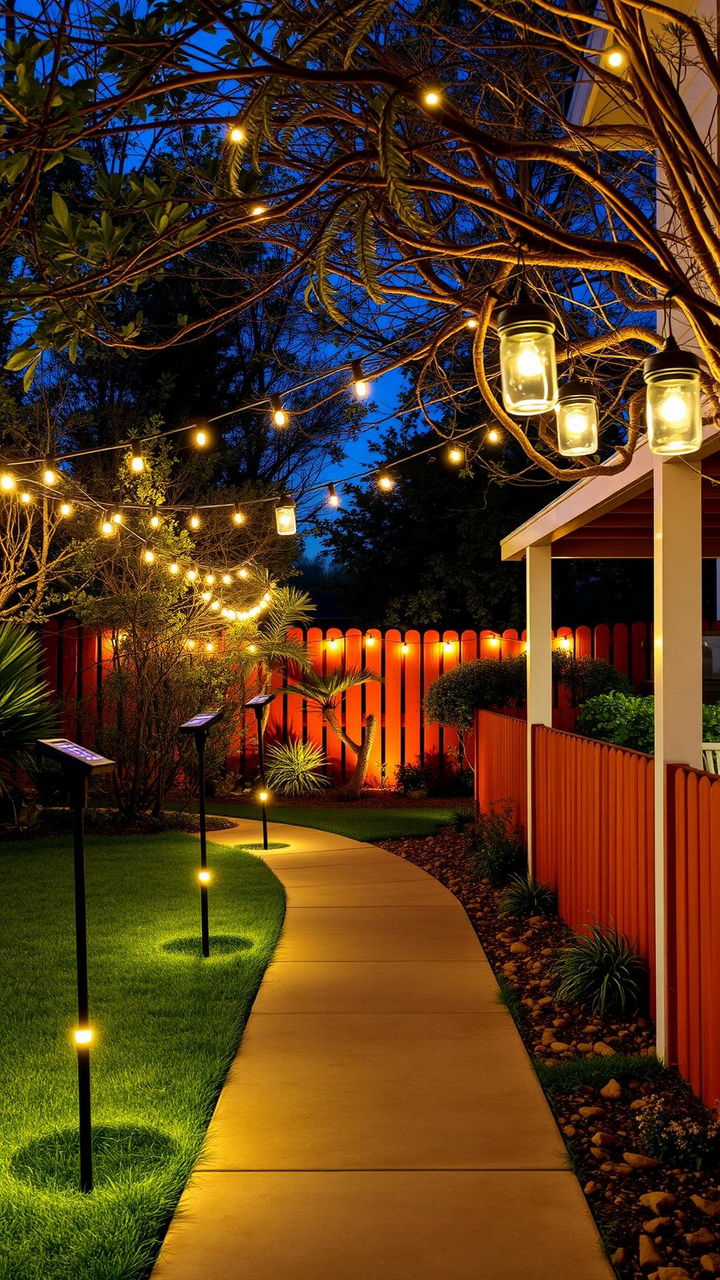
Add simple solar stakes along paths and a string of warm lights above to make your garden last longer. Turn old jars into lanterns, tie wire around them to hang them from branches, and group three together to make a cosy spot. Give a tired fence a lighter colour so it reflects the light at night. You can use broken terracotta shards as edging or plant labels, and you can make stepping-stone mosaics out of leftover tiles. These small things don’t cost much, make nights outside last longer, and help your plants look like a friendly room. These budget-friendly garden refreshers are always a hit with people.
Conclusion
Begin with one simple victory, and as you gain confidence, add another. These projects respect small spaces, tight budgets, and busy weeks while still giving you harvests, colour, and peace. Combine vertical growing with no-dig beds, set up automatic watering, and let pollinators in. Soon, the daily tasks of cutting herbs, checking vines, and sharing strawberries become the best part of home. Your garden doesn’t have to be big to make your home feel different; it just needs you.

